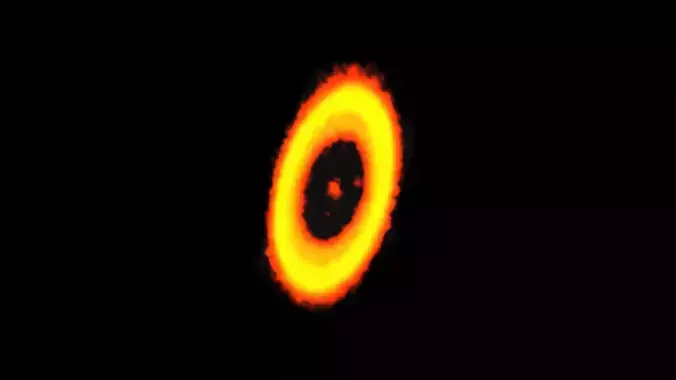1/13
DescriptionA circumplanetary disk (or circumplanetary disc, short CPD) is a torus, pancake or ring-shaped accumulation of matter composed of gas, dust, planetesimals, asteroids or collision fragments in orbit around a planet. They are reservoirs of material out of which moons (or exomoons or subsatellites) may form. Such a disk can manifest itself in various ways. In August 2018, astronomers reported the probable detection of a circumplanetary disk around CS Cha B. The authors state that The CS Cha system is the only system in which a circumplanetary disc is likely present as well as a resolved circumstellar disc. In 2020 though, the parameters of CS Cha B were revised, making it an accreting red dwarf star, and making the disk circumstellar. A giant planet will mainly form via core accretion. In this scenario a core forms via the accretion of small solids. Once the core is massive enough it might carve a gap onto the circumstellar disk around the host star. Material will flow from the edges of the circumstellar disk towards the planet in streams and around the planet it will form a circumplanetary disk. A circumplanetary disk does therefore form during the late stage of giant planet formation. The size of the disk is limited by the Hill radius. A circumplanetary disk will have a maximal disk size of 0.4 times the Hill radius. The disk also has a dead zone at the mid-plane that is non-turbulent and a turbulent disk surface. The dead zone is a favourable region for satellites (exomoons) to form. The circumplanetary disk will go through different stages of evolution. A classification similar to young stellar objects was proposed. In the early stage the circumplanetary disk will be full. Newly forming satellites will carve a gap close to the planet, turning the disk into a transitional disk. In the last stage the disk is full, but has a low density and can be classified as evolved. Additional to a circumplanetary disk, a protoplanet can also drive an outflow. One such outflow is identified via shocked SiS for HD 169142b. Circumplanetary disks are consistent with the formation of the Galilean satellites. The older models at the time were not consistent with the icy composition of the moons and the incomplete differentiation of Callisto. A circumplanetary disk with an inflow of 2*10−7 MJ/year of gas and solids was consistent with the conditions needed to form the moons, including the low temperature during the late stage of the formation of Jupiter. But later simulations found the circumplanetary disk too hot for the satellites to form and survive. This was later solved by introducing the dead zone within circumplanetary disks which is a favourable region for satellite formation and explains the compact orbit of Galilean satellites.
Texture Resolution: 1200 x 551
REVIEWS & COMMENTS
accuracy, and usability.













